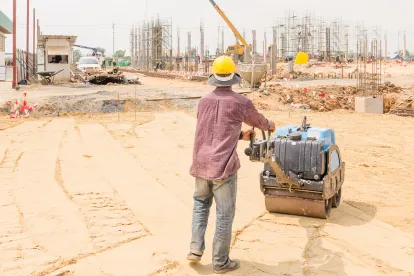There are increasing reports that some subcontractors have decided to suspend operations during the COVID-19 outbreak. The subcontractors made this difficult decision even though the construction projects for which the general contractor has a continuing performance obligation remain ongoing with CDC health and safety measures in place.
What should a general contractor do if it receives such a notice (assuming the project is still moving forward)? My thoughts are below recognizing that our present environment changes from day to day based upon news reports and governmental orders.
-
Reply to the subcontractor. Confirm receipt of the notice and inquire about the subcontractor’s reasons for suspension and corporate policies regarding COVID-19 if not clear from the notice letter. If not already established, provide a contact person for the subcontractor to provide updates as to the subcontractor’s policies and work plan schedule. Include a reservation of rights so that it is clear that you are preserving claims arising from the suspension and state that you will review the situation carefully and respond further at a later date.
-
Notify subcontractor default insurer if you have such insurance.
-
Investigate replacement subcontractors. Your project management team should investigate replacement contractors. Obtain preliminary pricing options depending upon your facts (lump sum by task/scope vs. time and materials) and ask for proposals.
-
Review your subcontract. Chances are that you know the terms of subcontractor default / non-performance very well. Take a look at this subcontractor’s contract to make sure those have not been altered. You likely have provisions in your subcontracts that require your subcontractor to perform in accordance with the project schedule and to adequately staff the project. Failure to do so, following some notice from the general contractor, permits the general contractor to supplement the labor and backcharge the subcontractor. There is also like a termination option if the subcontractor’s non-performance continues for an extended period of time or after a series of notices. Look at your claims and delay provisions. Your contract likely ties time extensions to the extensions approved by the Owner, but make sure you are aware of provisions that would allow time extensions to the subcontractor that may be appropriately implicated by the COVID-19 pandemic.
-
Send a contractual response to your subcontractor. The response will vary upon the situation, but it may :
-
Identify delays caused by the suspension. If the subcontractor’s work is on the critical path, then identify the fact that the suspension of work will likely impact the project schedule. If there are flow-down liquidated damages provisions or other contractual grounds to recover costs resulting from delay from your subcontractor, provide that notice and contractual reference.
-
If applicable, provide notice of replacement subcontractor. Make sure that you comply with whatever notice requirement may be in your contract and then give notice that you are hiring a replacement subcontractor. Explain the terms of the replacement subcontractor as far as scope and cost. Pursuant to your subcontract, state that you will deduct these costs from the subcontract balance with the suspended subcontractor.
-
Request the subcontractor to keep you informed. If the subcontractor lifts the suspension, you may be able to cancel or reduce some of the contracted scope of work for the replacement subcontractor. Whereas we are all in new territory with the COVID-19 pandemic, express as appropriate your understanding as to the subcontractor’s decision.
-
Reserve your rights. You may decide that you have to terminate the subcontract and you want to make sure you preserve that right as well as others.
-
-
Notify the Owner. Assuming you have already discussed COVID-19 mitigation efforts with the Owner, and notified the Owner of potential Contract Time and Contract Price impacts, notify the Owner of the subcontractor’s suspension as part of your regular updates and provide information regarding the impact on the project and/or your mitigation efforts (e.g. replacement contractor, not a critical path trade). Obviously, if the subcontractor suspensions rise to a certain level, and the availability of substitute labor is not present, the Owner and General Contractor will likely have a larger discussion regarding the project schedule.
Hopefully, the subcontractor’s voluntary suspension of work will be temporary and you will be able to complete the Project as close to on-schedule as possible. In either situation, following above steps should increase the project communication regarding delays/impacts resulting from subcontractor suspension and reduce the impact to the project from a time/cost standpoint.



 />i
/>i

